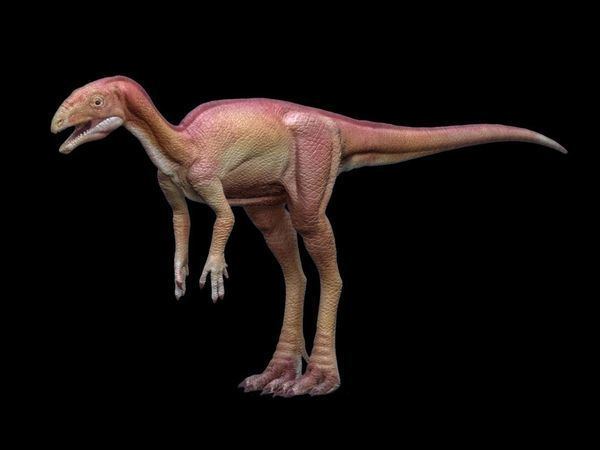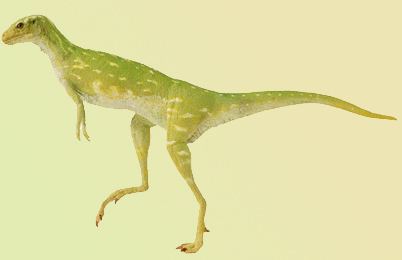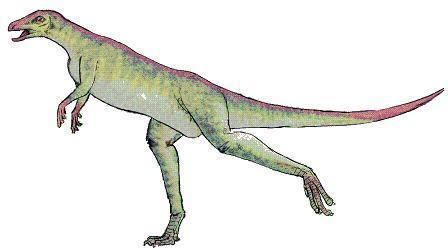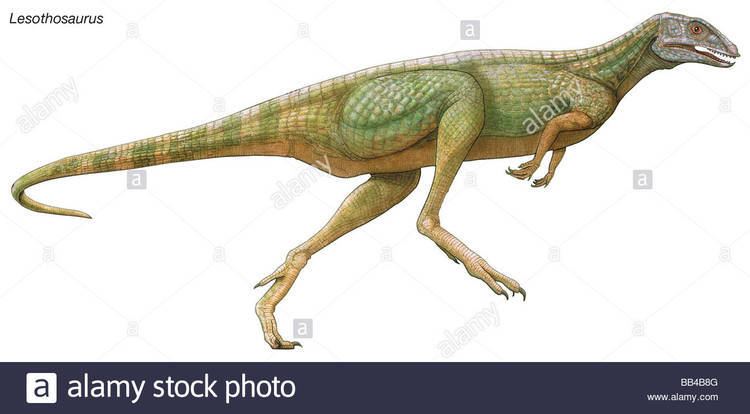Scientific name Lesothosaurus Rank Genus | Order †Ornithischia Species †L. diagnosticus Higher classification Lesothosauridae | |
 | ||
Similar Dinosaur, Heterodontosaurus, Ornithischia, Fabrosaurus, Pisanosaurus | ||
Lesothosaurus dinosaur train the jim henson company
Lesothosaurus was a type of omnivorous ornithischian dinosaur. It was named by paleontologist Peter Galton in 1978, the name meaning "lizard from Lesotho". The genus has only one valid species, Lesothosaurus diagnosticus.
Contents

Description

Lesothosaurus was a 2 metres (6.6 ft) long, bipedal omnivore. It was one of the earliest ornithischians. Its long slender legs, small arms with hands that would not have been able to grasp properly, and slender tail all suggest that it was a fast runner. Like all ornithischians, the tips of Lesothosaurus upper and lower jaws were horny, forming a beaklike structure. Behind the beak were leaf-shaped teeth that lined the jaws, and near the front of the upper jaws were 12 fanglike teeth. Analysis of its teeth has shown that Lesothosaurus sliced up its food with its beak and was not able to chew its food. Studies of the tooth wear have shown much less abrasion on the teeth than would be expected of a plant-eater feeding mainly on tough, arid-climate plants, and concluded that Lesothosaurus was probably an opportunistic omnivore, feeding primarily on small animals during seasons when softer plants were not available.

The small skull of Lesothosaurus was short and flat, with large eye sockets. It had large cavities for the eye and jaw muscles. It had a short, pointed snout, and the lower jaw may have ended in a beak. Its teeth were pointed with grooved edges. The skull was mounted on a short but flexible neck.

Discoveries of Lesothosaurus in the upper Elliot formation suggest that this early ornithischian dinosaur may have lived in groups.
Classification
Lesothosaurus was originally considered an ornithopod. However, more recent work by Paul Sereno has suggested that it may actually represent one of the most primitive of all known ornithischian dinosaurs. The taxonomic history of Lesothosaurus is complex and it has long been confused with Fabrosaurus, another small ornithischian from the same locality. In 2005, Richard J. Butler published a new phylogenetic study of ornithischians, in which he proposed that Lesothosaurus was a basal member of the clade Neornithischia, which includes pachycephalosaurs, ceratopsians and ornithopods. Alternatively, this dinosaur may be a very early thyreophoran, a member of the group including the armored stegosaurians and ankylosaurians.
The species Stormbergia dangershoeki (named by Richard Butler in 2005), named for fossils found in the upper Elliot Formation, almost certainly represents the adult form of Lesothosaurus. Stormbergia was named for the Stormberg Series of rocks in southern Africa, which includes the Elliot Formation, and the location (Dangerhoek Farm) in South Africa at which the type specimen was found. The holotype and referred specimens of Stormbergia had been mentioned in the scientific literature as a 'large fabrosaurid' for at least 20 years prior to description. A study published in 2016 by Baron, Norman & Barrett demonstrated that the differences between Stormbergia and Lesothosaurus are most likely related to the animal's growth. The authors argued that Stormbergia is a junior subjective synonym of Lesothosaurus and should be regarded as invalid.
